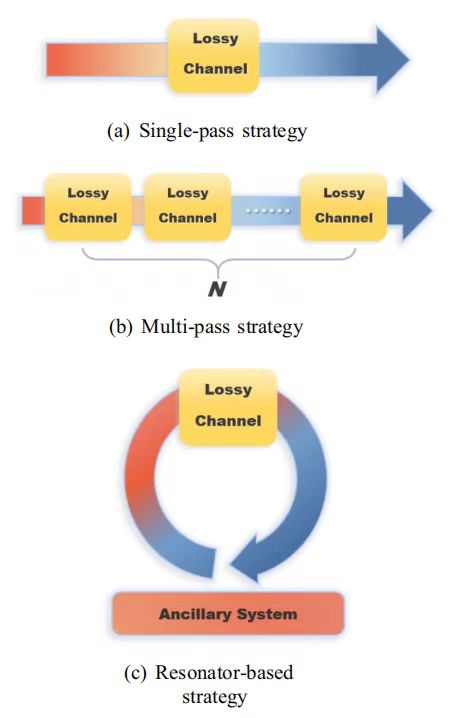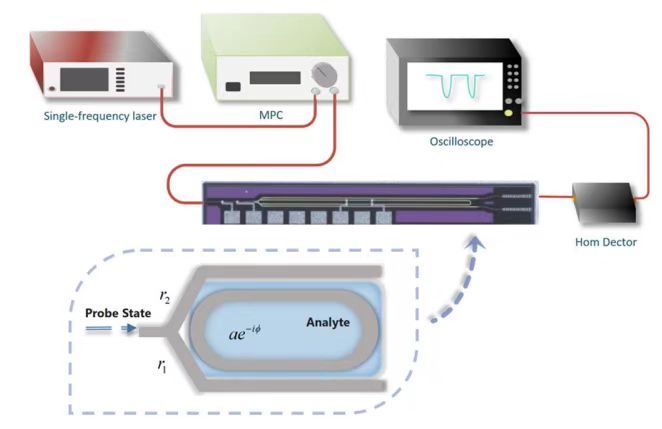- Home
- About Us
- Students
- Academics
-
Faculty
- Electrical Engineering
- Automation
- Computer Science & Engineering
- Electronic Engineering
- Instrument Science and Engineering
- Micro-Nano Electronics
- School of Software
- Academy of Information Technology and Electrical Engineering
- School of Cyber Security
- Electrical and Electronic Experimental Teaching Center
- Center for Advanced Electronic Materials and Devices
- Cooperative Medianet Innovation Center
- Alumni
-
Positions
-
Forum
News
- · Bin Dai's Team Unveils the Assembly Mechanism of β-Lactoglobulin Fibrils, Providing New Insights for the Development of Functional Nanomaterials
- · Mingyi Chen’s research group has made important progress in the field of analog-to-digital converter chips for brain-computer interface
- · Progress in the Development of Semiconductor Nanomaterials to Activate Pyroptosis for Cancer Therapy
- · Jiamiao Yang’s team achieved the high precision optoelectronic reservoir computing based on complex-value encoding
- · Significant Advancements in Resonator-Enhanced Quantum Sensing Achieved by Zenguihua's Team at the School of Sensing Science and Engineering
Significant Advancements in Resonator-Enhanced Quantum Sensing Achieved by Zenguihua's Team at the School of Sensing Science and Engineering
Recently, Professor Zeng Guihua’s group from the School of Electronic Information and Electrical Engineering at Shanghai Jiao Tong University, in collaboration with Professor Zhou Linjie’s group, conducted research and experimentally demonstrated a quantum parameter estimation strategy based on resonator enhancement. This approach surpasses the standard quantum limit without utilizing quantum resources such as entanglement or squeezing. The research findings were published in the journal Physical Review Letters as a research article titled "Surpassing the Quantum Limit in Bosonic Loss Estimation Without Quantum Probes" on 6th August, 2024 [Physical Review Letters 133, 060801 (2024)].
Research Background:
Optical energy dissipation is one of the most significant phenomena in physics, and it can essentially be modeled through bosonic loss channels. Estimating the transmissivity of a bosonic loss channel is not only of great interest in fundamental research but also holds practical significance for applications such as gas sensing, molecular spectroscopy, and the characterization of optical media. Traditionally, it is believed that the precision of coherent-state probes with fixed input energy is limited by the standard quantum limit, and quantum probes are necessary to surpass this limit. However, Fock states and other quantum probes are difficult to generate and are sensitive to noise, making it challenging to achieve the expected precision in practice. Moreover, compared to classical light sources, the integration of quantum light sources still presents challenges.
To address these challenges, the research team explored an alternative approach by studying the resonator-based quantum metrology strategy and proposed a technical implementation scheme. Using only coherent-state light sources, they experimentally achieved bosonic loss estimation with precision beyond the standard quantum limit. This technique is robust against temperature fluctuations and has universal applicability across different types of resonators and media, laying the foundation for the development of portable quantum sensors in the future.
Innovation Achievements:
The logic diagrams for the resonator-based strategy in comparison with two other bosonic loss estimation strategies are, respectively, depicted in Fig.1. In these scenarios, the lossy channel attenuates an input bosonic probe by transmitting a fraction a2 (≤1,a is amplitude attenuation coefficient) of the photons and discarding the rest. For the single-pass strategy, the probe interacts with the lossy channel only once. Alternatively in the multipass strategy, the probe sequentially interacts with the lossy channel for N times, which leads to an N-fold improvement on precision of estimating a. Obviously, multiple copies of the lossy channel must be constructed identically to promise the performance. In contrast to the above two conventional strategies, the resonator-based strategy can provide enhanced precision comparing to the single-pass strategy without lossy channel copies. In this strategy, a ring resonator working at its resonant condition is adapted to make the coherent-state probe repeatedly interact with the same lossy channel, so that the precision can be significantly improved. Under critical coupling, it can even outperform the single-pass strategy using quantum probes.

Figure 1. Schematic Diagram of Quantum Loss Estimation Using Different Strategies
Based on theoretical findings, the research team proposed an experimental demonstration scheme, as shown in Figure 2. The setup mainly consists of the following components: a single-frequency laser, a multifunctional polarization controller (MPC), an on-chip symmetrical racetrack-type ring resonator, a homodyne detector, and an oscilloscope. In the experiment, the coherent-state is generated by the single-frequency laser and coupled into the multifunctional polarization controller via an optical fiber, which then directs the light to the symmetrical racetrack-type ring resonator. The amplitude attenuation factor a inside the ring is controlled by adjusting the input polarization state. According to the theory, the coupling coefficient of the resonator is designed at the optimal operating point (i.e., the coupling coefficients between the ring resonator and the adjacent straight waveguides are equal). Finally, the output of the ring is measured using a detector, and the data is recorded by an oscilloscope.

Figure 2. Experimental setup
By altering the mode distribution within the resonator, the research examined the loss response under different optical modes. The experimental results, as shown in Figure 3, are consistent with the theoretical predictions, indicating a significant improvement in the precision of loss estimation when combining coherent-state light sources with the ring resonator. Even in the presence of substantial electrical noise and suboptimal working conditions, the measurement precision still surpasses the standard quantum limit. Notably, near the optimal operating point, the signal-to-noise ratio (SNR) is greatly enhanced, further validating the effectiveness of the proposed technique. To further verify the robustness of the experimental setup, multiple sets of repeat experiments were conducted under different temperatures and external disturbances, all of which demonstrated excellent stability.

Figure 3. Experimental Results
Summary and prospect:
This work proposes and experimentally demonstrates a novel quantum parameter estimation technique based on resonator enhancement. It does not rely on complex quantum light sources and has strong disturbance resistance, making it suitable for integration. It is expected to have significant potential value in applications.
In recent years, Professor Zeng Guihua's team has conducted in-depth research on practical quantum sensing technologies, exploring new methods and mechanisms such as weak measurement, quantum dimension expansion, quantum artificial intelligence, and resonator enhancement. They have originally proposed and realized several new quantum sensing solutions that significantly improve precision while maintaining reliability and stability. Related work has resulted in over 40 publications in top international journals such as Nature Communications, Science Advances, and Physical Review Letters. The team has also developed more than 10 prototypes of quantum sensors, including an optical quantum gyroscope with a precision level of 10⁻⁵ (°/h), an optical quantum acoustic sensor with sensitivity at the micropascal level, and a single-pixel quantum radar capable of imaging at distances of up to 100 kilometers, all of which have reached the international leading level.
Additional Information:
The first author of this paper is Tao Yu, a PhD student from the School of Electronic Information and Electrical Engineering at Shanghai Jiao Tong University. Associate Researcher Huang Jingzheng, Associate Professor Wang Tao, Professor Zhou Linjie, and Professor Zeng Guihua are the co-corresponding authors of this paper. Other contributors include PhD students Li Xinhang, Li Lang, and Associate Researcher Li Hongjing, all of whom made significant contributions to the work. This research was supported by the National Natural Science Foundation of China (Grant Nos. 62071298, 62101320, 62135010), the Science and Technology Innovation 2030 “Quantum Communication and Quantum Computer” Major Project (Grant No. 2021ZD0300703), and the Shanghai Major Project (Grant No. 2019SHZDZX01).
-
Students
-
Faculty/Staff
-
Alumni
-
Vistors
-
Quick Links
